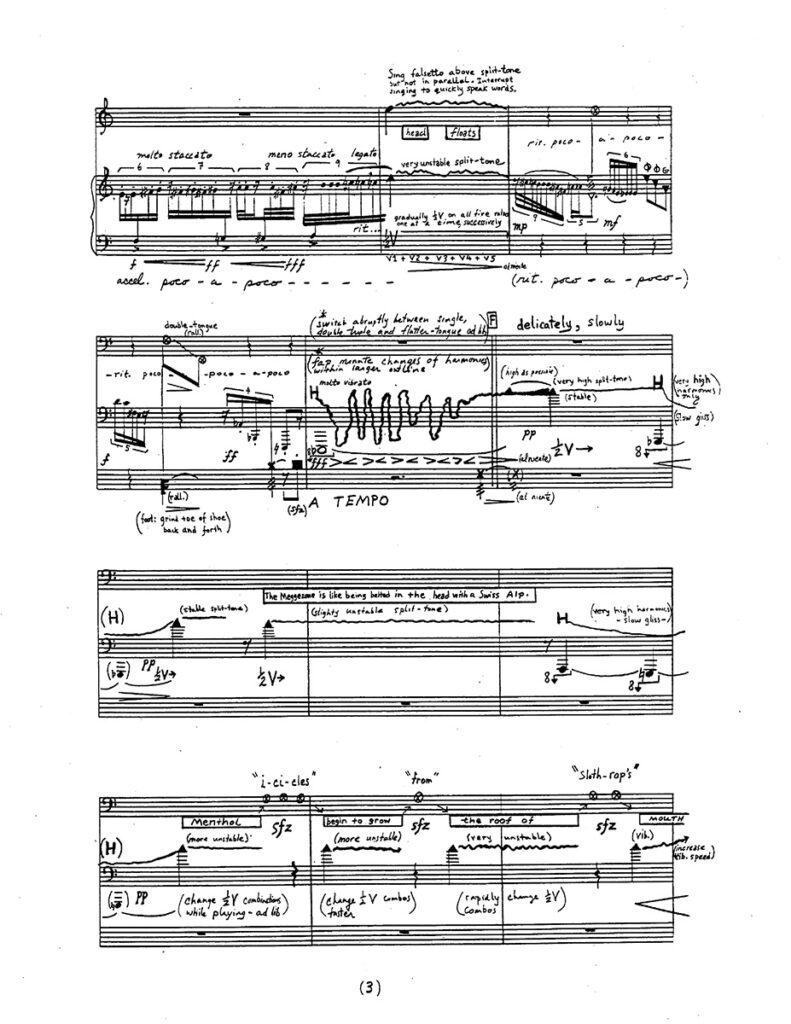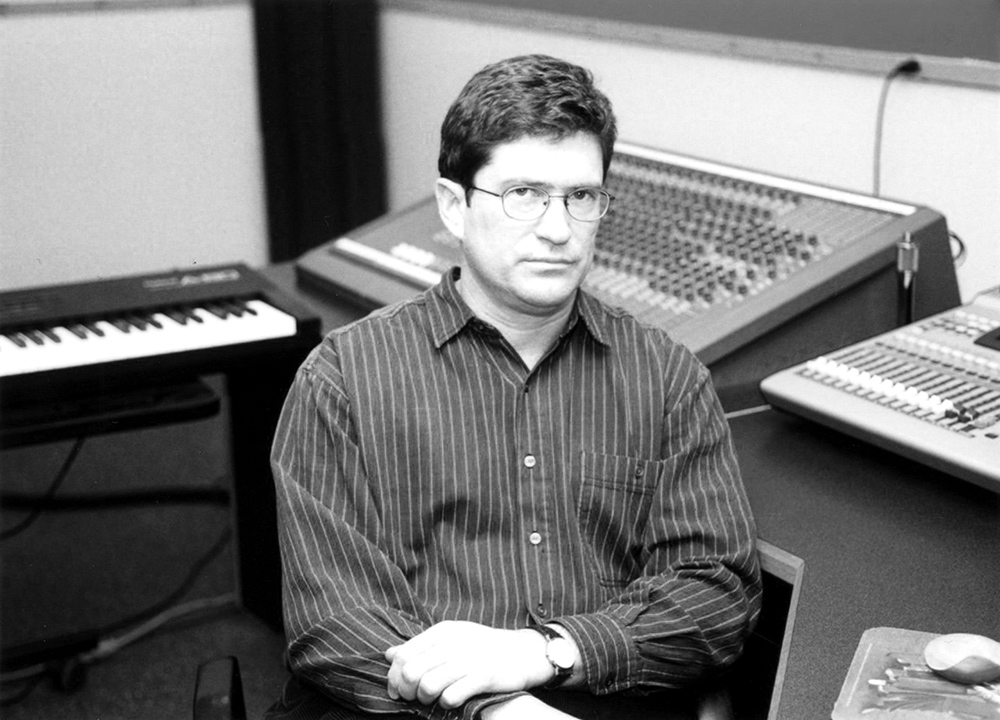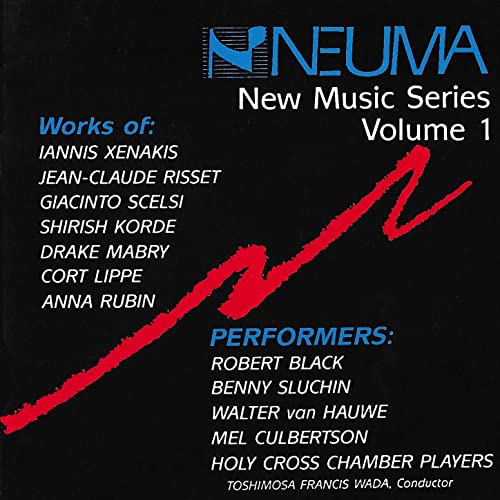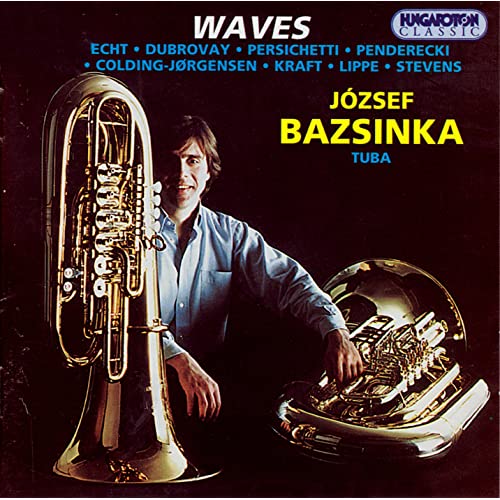Pynchon Music: Cort Lippe
…like being belted in the head with a Swiss alp…
Cort Lippe (b. 1953)
Cort Lippe is an American composer who specializes in electronic composition and computer music. He has studied with a wide range of avant-garde composers, including Iannis Xenakis, Pierre Boulez, Olivier Messiaen, and Karlheinz Stockhausen. He worked at the world-famous Institute for Research and Coordination in Acoustics/Music (IRCAM) in Paris for nearly a decade, teaching courses and designing music software. Since 1994, Lippe has taught at the University at Buffalo, where he directs the Lejaren Hiller Computer Music Studio.
Pynchon Connection
Performance artist Laurie Anderson once asked Thomas Pynchon if she could transform Gravity’s Rainbow into an opera. He replied in the affirmative—providing that she scored it for solo banjo! Anderson passed on the opportunity, leaving a tragic gap in the Met’s repertory that remains unfilled to this day. The closest someone’s come to picking up the gauntlet is Cort Lippe, who used Gravity’s Rainbow for his 1987 work, Solo Tuba Music. Granted it’s just seven minutes long, and incorporates only five sentences from the novel; but Pynchon did give his permission—and the instrument in question is the tuba, which could have easily displaced the banjo as a dissuading punchline!
Additionally, Lippe may be indirectly connected to Pynchon through his teacher, Karlheinz Stockhausen, who is mentioned by name in The Crying of Lot 49. More details about Stockhausen may be found on Spermatikos Logos’ Tim Souster page.
Solo Tuba Music
A work for solo tuba based on Gravity’s Rainbow…? Somehow Solo Tuba Music is both exactly what you’d expect, and nothing like you’d expect, which makes about as much sense as anything else in the Meggazone. Demanding tremendous creativity and virtuosity from the performer, Lippe’s piece carries the tuba well beyond its usual role as merry drunk or rumbling giant. The performer must not simply blow into the tuba; but also howl, growl, mutter, moan, gargle and whisper. The tuba also serves as a percussion instrument, and the score contains special notations instructing the player to “pop mouthpiece with palm of hand,” “tap bell of instrument,” and “tap, scrape, or stamp foot (or feet).” This latter notation comes with a paragraph-long footnote (pun intended?) about stomping dynamics and the use of metal or sand to enhance shoe-based acoustics. The five lines borrowed from Gravity’s Rainbow are neither spoken nor sung, but muttered into the tuba to produce various sonic effects. As a result, Pynchon’s text is rendered completely unintelligible—and for once, bad Mexican weed isn’t to blame!
While Solo Tuba Music isn’t likely to enter anyone’s daily rotation, it’s definitely worth a listen; though like Berio’s Sequenzas—with which it shares similarities—it loses something in the translation from live performance to recording. Solo Tuba Music cries out to be seen, not just heard, and the score offers numerous opportunities for invention, improvisation, and interpretation. Happily, Lippe has made the score available on his homepage. Like most avant-garde scores, the score for Solo Tuba Music is a work of art in itself, and it’s fun to follow along while listening—knowing how to read music is not required to appreciate its many eccentricities!
There are two available recordings of Solo Tuba Music. The first is performed by Mel Culbertson, the artist who commissioned and premiered the work. Released on Neuma records’ New Music Volume 1, it’s available as a free MP3 download from Lippe’s homepage. The other is by Hungarian tubist József Bazsinka, released on his solo album Waves and available to hear on YouTube. Of the two recordings, Culbertson’s is more precise, more “avant-garde,” so to speak; but Bazsinka seems to be having more fun, and takes an obvious delight in its comical aspects. The text is also slightly more intelligible in the Bazsinka recording!
Program Notes
By Thomas Pynchon
Copyright © 1973 by Thomas Pynchon
Reprinted by permission of Melanie Jackson Agency.
Additional Information
2–4. Drake Marby: 12.5.83 (18:07)
5. Jean-Claude Risset: Contours (9:43)
6-8. Giacinto Scelsi: Tre Pezzi per Trombone Solo (8:48)
9. Shirish Korde: Chamber Piece for Six Soloists (8:30)
10. Anna Rubin: Crying the Laughing and Golden (9:17)
11. Cort Lippe: Solo Tuba Music (6.12)
Mel Culbertson—tuba.
2. László Dubrovay: Solo No. 3 for tuba (9:02)
3. Vincent Persichetti: Parable XXII for tuba solo, Op. 147 (10:59)
4. Krzysztof Penderecki: Capriccio for solo tuba (4:30)
5. István Láng: Aria di coloratura (6:59)
6. Henrik Colding-Jorgensen: Boast (5:48)
7. William Kraft: Encounters II (6:13)
8. Cort Lippe: Solo Tuba Music (7:43)
9. John Stevens: The Liberation of Sisyphus (8:51)
József Bazsinka—tuba.
Pynchon on Record
Return to the main music page
Last Modified: 26 November 2021
Main Pynchon Page: Spermatikos Logos
Contact: quail(at)shipwrecklibrary(dot)com




